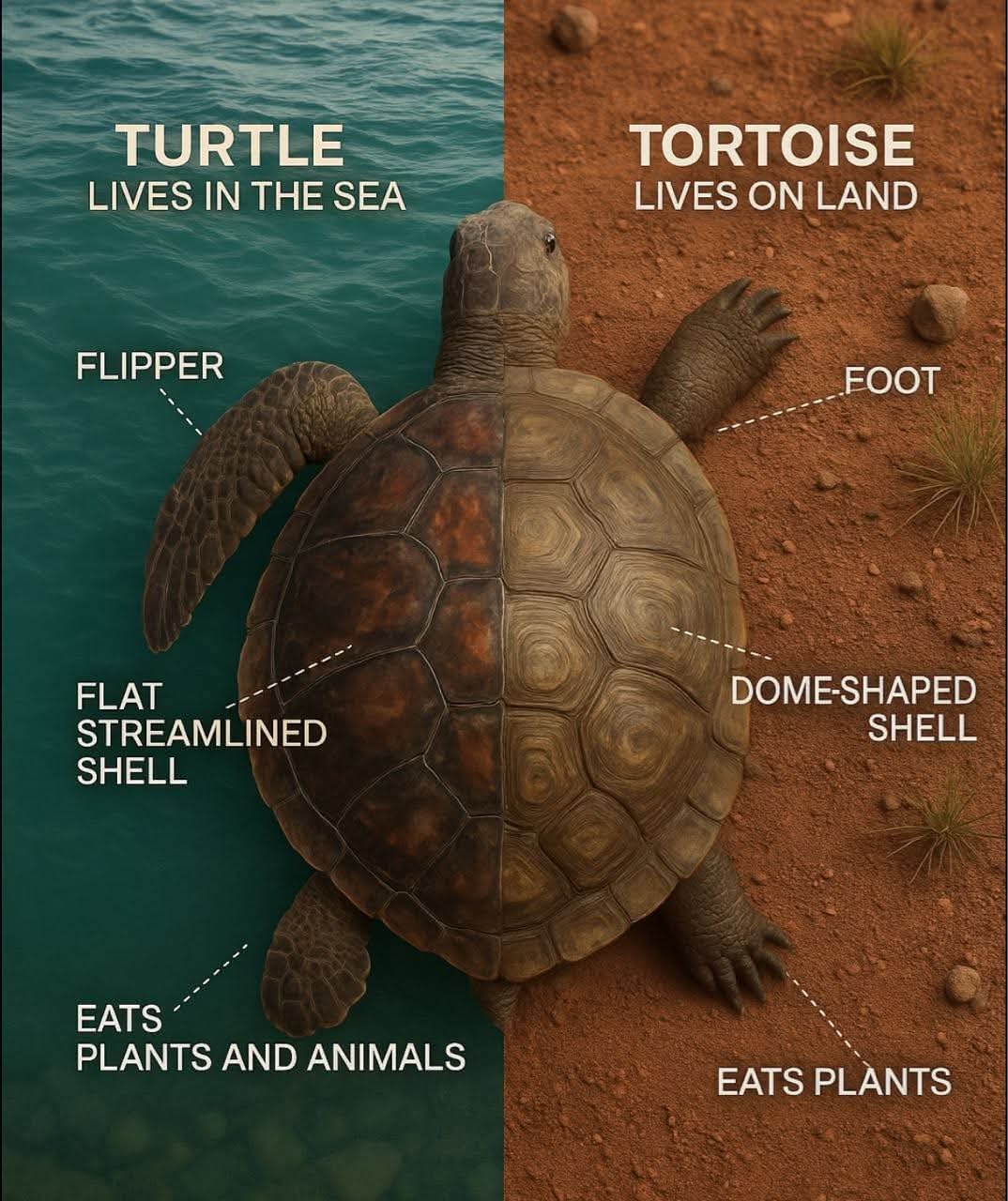
Have you ever watched a slow-moving creature with a hard shell and wondered if it's a tur...
Related Blogs
The difference between a turtle and tortise
9 minutes, 56 seconds
-22 Views 0 Comments 0 Likes 0 Reviews

Turtle vs. Tortoise: Deciphering the Key Differences Between Shell-Dwelling Reptiles
Have you ever watched a slow-moving creature with a hard shell and wondered if it's a turtle or a tortoise? People mix them up all the time. Both belong to the chelonian family, but their lives and looks differ a lot. In this piece, we'll break down the key differences in turtle vs. tortoise traits, from bodies to homes. You'll walk away knowing exactly how to tell them apart.
Evolutionary Lineage and Taxonomy
All these shelled reptiles share deep roots in nature's history. They evolved over millions of years to protect themselves with bony armor. Let's look at their family tree to see where turtle vs. tortoise paths split.
Shared Ancestry Under the Order Testudines
Turtles and tortoises both fall under the order Testudines. This group includes over 300 species of reptiles. They all have that signature shell made from fused ribs and scales. From there, their common ancestor passed down traits like cold-blooded bodies and egg-laying habits. These features help them thrive in various spots around the world.
Suborder and Family Divergence
Things get interesting when we zoom into suborders. Most tortoises belong to the Testudinidae family, which marks them as land lovers. Turtles often split into Cryptodira for neck-pulling types or Pleurodira for side-necked ones. Sea turtles, for example, are in the Cheloniidae family. This setup shows how evolution tailored them for different worlds, like water versus dirt.
Anatomy: Shell Shape and Limb Structure Tells the Tale
Spotting a turtle vs. a tortoise starts with their bodies. These features aren't just for show—they help them survive daily challenges. Shells and legs reveal a lot about their needs.
Carapace Conformation: Dome vs. Streamline
Tortoises boast a high, rounded dome on their upper shell, or carapace. This shape shields them from falls and bites on land. Turtles, on the other hand, have flatter, sleeker shells that cut through water with ease. Their lower shell, the plastron, stays flat for swimming in turtles but curves up in tortoises for extra defense. Think of it like a fortress versus a boat.
Feet and Flanges: Adapting for Land or Water
Tortoise feet look stubby and thick, like mini elephant paws. These help them dig burrows and grip rough ground without slipping. Turtle feet? They're webbed for paddling or flipped into fins for ocean dives. Claws on turtles let them climb rocks or logs to bask in the sun. Each design fits their main job—strolling or stroking through waves.
Head and Neck Retraction Mechanisms
Pulling in their heads keeps them safe from harm. Most tortoises use a straight pull-back, folding the neck right into the shell. This is common in the Cryptodira group. Some turtles bend their necks sideways for the same trick, seen in Pleurodira types. It's a small detail, but it ties into how they hide from threats in their homes.
Habitat and Lifestyle: Where They Live Dictates How They Live
Where a creature hangs out shapes everything about it. Tortoises stick to dry spots, while turtles dive into wet ones. These choices link back to their builds and moves.
The Terrestrial Specialist: Tortoise Environments
Tortoises call deserts, grasslands, and forests home. They prefer warm, dry areas where they roam for food. The Galapagos tortoise, for instance, lives on rocky islands with little rain. These guys don't swim—they'd sink like a rock in deep water. Their thick shells hold heat from the sun all day.
Aquatic and Marine Dwellers: The Diverse World of Turtles
Turtles split their time between water and land edges. Freshwater types, like sliders, stick to ponds and rivers. Sea turtles roam oceans but return to beaches to lay eggs. Take the green sea turtle—it swims thousands of miles to nest on sandy shores. Their lives revolve around currents and hidden coves.
Locomotion Differences: Walking vs. Paddling
Watch a tortoise go: slow steps, head down, covering ground bit by bit. They plod along trails in search of plants. Turtles? They paddle with grace in water, flipping through depths. On land, they waddle short distances to warm up. This contrast shows how habitat pushes their movement styles.
Diet and Longevity: Sustenance and Lifespan Comparisons
What they eat and how long they last vary too. Food choices match their surroundings, and both groups can outlive many pets. Let's compare these sides of turtle vs. tortoise life.
Herbivorous Diets of Tortoises
Tortoises munch mostly on plants. Grasses, leaves, and cactus pads fill their days. They need fiber to keep guts working right. If you keep one as a pet, offer a mix of greens like dandelion and hibiscus. Skip fruits—they cause health issues over time. This plant-based life suits their land setup.
Omnivorous Tendencies in Aquatic Turtles
Turtles eat a bit of everything. Insects, fish, and veggies make up their meals. Some grab jellyfish or seaweed in the sea. Freshwater ones hunt small critters at dawn. This variety helps them grab quick energy in watery homes. Always provide live food for captives to mimic nature.
Extreme Longevity Records
Tortoises often hit triple digits in age. Jonathan, a Seychelles giant, turned 190 years old. They grow slow in safe spots. Turtles live long too, but not as much—many reach 50 to 80 years. Box turtles in the wild might see 100 if lucky. Factors like habitat loss cut these spans short.
Practical Considerations: Identification and Conservation Status
Knowing these differences matters for more than trivia. It helps if you spot one in the wild or plan to adopt. We'll cover tips and big-picture worries.
Quick Field Identification Guide
Spot the differences fast with this checklist:
Shell shape: Dome for tortoises, flat for turtles.
Feet type: Thick and dry for land walkers, webbed for swimmers.
Habitat clue: Dry ground means tortoise; water nearby screams turtle.
Neck move: Straight tuck versus side bend, if you get close.
If it lumbers like an elephant across the sand, it's a tortoise. Use these signs next time you're outdoors. They make ID simple and fun.
Conservation Concerns Across the Groups
Many face tough times from human actions. Sea turtles suffer from plastic trash and lost beaches—seven species are at risk per IUCN. Over 50% of them show endangered status. Tortoises deal with habitat grab in dry lands, like the gopher tortoise in the US. Poaching for shells or food hurts both. Support local cleanups to help these shelled friends stick around.
Conclusion: Mastering the Chelonian Vocabulary
Tortoises rule the land with domes and plant diets, while turtles conquer water with sleek forms and mixed meals. Habitat shapes their shells, steps, and survival tricks. Next time turtle vs. tortoise comes up, you'll nail the facts. Appreciate these ancient reptiles—they've guarded secrets of the earth for ages. Share what you learned and protect their worlds.
Photos

